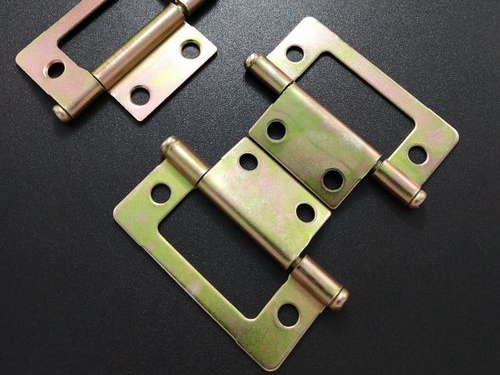Galvanizing: Long-Lasting Corrosion Protection for Steel Components
Introduction
Galvanizing is a highly reliable surface treatment process widely used to provide durable corrosion protection for 3D printed steel components. By coating steel parts with a layer of zinc through immersion or electrochemical processes, galvanizing significantly extends the service life of components exposed to harsh environmental conditions. This method is extensively applied in automotive, construction, energy, and heavy machinery industries, where parts must resist rust, oxidation, and mechanical wear according to standards like ASTM A123, ASTM A153, and ISO 1461.
This blog will explore the galvanizing process, its specific advantages for 3D printed parts, compatible materials, key industry applications, and comparative insights with other protective coatings to help you choose the most effective corrosion protection solution.
How Galvanizing Works and Quality Assessment Criteria
Galvanizing primarily involves depositing a zinc layer onto a steel substrate to create a sacrificial anode effect, where the zinc layer corrodes preferentially to the steel, thus protecting it from rust and environmental degradation. The two most common galvanizing techniques are hot-dip galvanizing and electro-galvanizing.
Key Quality Assessment Criteria:
Coating Thickness: Hot-dip galvanized coatings typically range from 50–150 µm, whereas electro-galvanized coatings range from 5–25 µm, measured according to ISO 1460 standards.
Corrosion Resistance: Galvanized coatings can withstand salt spray testing (ASTM B117) for over 500 hours, with thicker hot-dip coatings enduring beyond 1000 hours.
Adhesion Strength: Evaluated by ASTM D3359 crosshatch adhesion testing, ensuring the zinc layer strongly bonds to the base metal.
Surface Integrity: Coating uniformity, free from bare spots, blisters, or flaking, verified through visual inspection and coating thickness gauges.
Galvanizing Process Flow and Key Parameter Control
The galvanizing process involves carefully controlled steps:
Surface Preparation: Parts undergo degreasing, pickling (acid cleaning), and fluxing to ensure a clean, oxide-free surface ideal for zinc bonding.
Zinc Coating Application:
Hot-Dip Galvanizing: Parts are immersed in molten zinc (~450°C), forming a metallurgically bonded coating.
Electro-Galvanizing: Zinc is deposited electrolytically in a controlled electroplating bath at room temperature.
Post-Treatment: Parts are cooled, quenched, and may be passivated with chromate-free solutions for enhanced corrosion resistance.
Inspection and Testing: Parts are inspected visually, and coating thickness, adhesion, and corrosion resistance are verified through non-destructive and destructive testing per ASTM and ISO standards.
Key parameters include bath temperature, immersion time, current density (for electro-galvanizing), and post-coating treatments—all critical for optimizing coating quality and durability.
Applicable Materials and Scenarios
Material Type | Common Alloys | Applications | Industries |
|---|---|---|---|
Automotive frames, construction fasteners, brackets | Automotive, Construction, Industrial | ||
Heavy-duty tooling, industrial dies | Automotive, Industrial | ||
Low-carbon steels like A36 | Structural beams, guardrails, enclosures | Construction, Infrastructure |
Galvanizing is ideal for automotive components, construction structures, energy infrastructure, and general industrial applications where superior corrosion protection is vital.
Advantages and Limitations of Galvanizing for 3D Printed Steel Parts
Advantages:
Superior Corrosion Protection: Provides long-term resistance to rust, oxidation, and environmental degradation, extending part lifespan by decades.
Self-Healing Properties: Zinc coating offers sacrificial protection, automatically protecting minor surface scratches or damages.
Cost-Effective: Offers a highly durable finish at a relatively low cost compared to more complex coatings like PVD or chrome plating.
Minimal Maintenance: Galvanized parts typically require minimal maintenance over their operational life.
Limitations:
Surface Finish Quality: Hot-dip galvanizing results in a slightly rough or spangled finish, which may not be suitable for applications requiring high aesthetic quality.
Limited Material Compatibility: Primarily suited for ferrous metals; less effective for stainless steels and unsuitable for non-metals.
Dimensional Variations: Thicker coatings from hot-dip processes can slightly alter dimensions, which may be critical for precision applications.
Galvanizing vs. Other Surface Treatment Processes
Surface Treatment | Description | Corrosion Resistance | Coating Thickness | Surface Finish | Typical Applications |
|---|---|---|---|---|---|
Zinc coating for sacrificial corrosion protection | Excellent (500–1000+ hrs ASTM B117) | 5–150 µm | Matte, spangled | Automotive, Construction | |
Chemical phosphate conversion | Good (≥500 hrs with topcoat) | 1–10 µm | Matte, uniform | Automotive, Industrial | |
Decorative chromium plating | Excellent (>240 hrs ASTM B117) | 2–20 µm | Glossy, mirror | Automotive, Aerospace | |
Polymer protective coating | Excellent (>500 hrs ASTM B117) | 50–150 µm | Glossy or matte | Automotive, Industrial |
Application Cases for Galvanized 3D Printed Steel Parts
Automotive Frames and Chassis Parts: Hot-dip galvanized structural components improve resistance to road salt, moisture, and wear, increasing vehicle durability and safety.
Construction Fasteners and Supports: Galvanized mild steel bolts, beams, and supports offer long-term corrosion protection, minimizing maintenance in outdoor environments.
Energy Infrastructure Components: Galvanized steel parts in power plants, solar farms, and oil & gas facilities withstand aggressive corrosive atmospheres, extending system service life.
Industrial Equipment Frames: Heavy machinery frames and housings benefit from galvanized coatings, resisting rust and mechanical wear even under harsh operating conditions.
FAQs
What is galvanizing, and how does it protect 3D printed steel parts?
What materials are best suited for galvanizing in 3D printing?
How does galvanizing compare with phosphating and chrome plating?
Can galvanized coatings be applied to complex 3D printed geometries?
What industries benefit most from galvanizing for 3D printed components?

